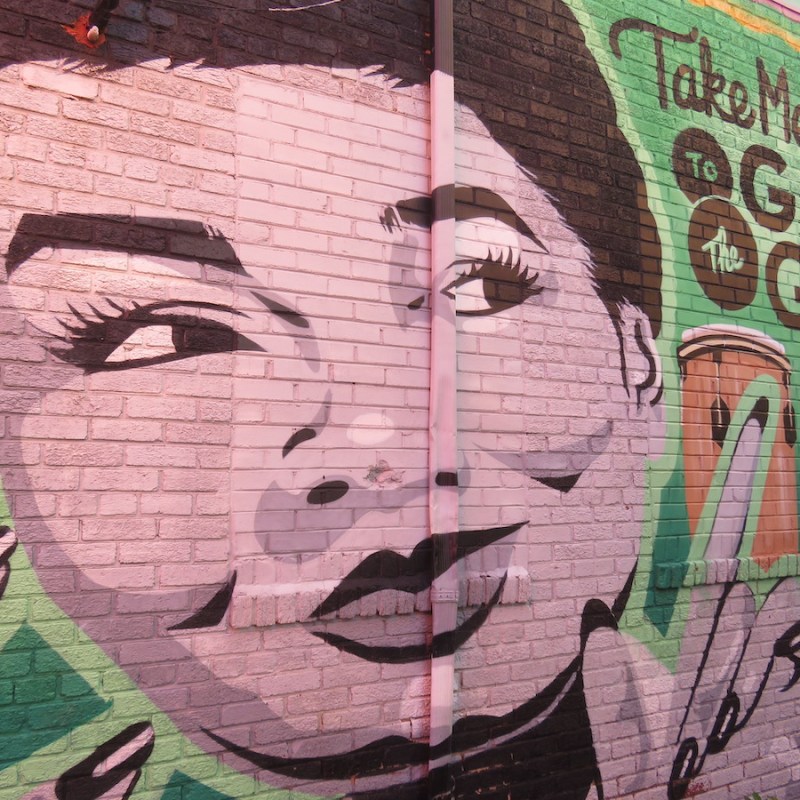
On any afternoon, strolling down D.C.’s U Street surrounds you with three distinctive sounds: 14th and U, the rhythm of hard bop and swing; 12th and U, the nostalgia of 1960s and 1970s soul; and 7th and U, the infectious Go-Go sound of the 1990s. All three are part of the bigger story of U Street’s beginnings and where it is today.
Videos by TravelAwaits
Looking at this area now, many visitors dismiss it as nothing more than a collection of stores, boutiques, and restaurants. However, that is a limited view and a disservice to families that have lived in this area for generations.
U Street is part of the Shaw Neighborhood in Northwest D.C., which is best described as a reincarnated soul. After being a rest site for Union soldiers during the Civil War (1861–1865), it became a community for Black Americans who transformed it into Black Broadway. In the 1960s, it declined after the assassination of Dr. Martin Luther King Jr. and stumbled to recover as criminals preyed on the empty storefronts.
The MTA’s Green Line was built from the 1970s to the 1990s, and today transports the newer inhabitants and visitors past the Mall, Georgetown, and Adams-Morgan, where, in the evenings, more mainstream music spills out of the area’s nightclubs.
In contrast, U Street is an old soul awaiting her seekers. When I met her, I was instantly smitten. Each time I came back, I learned more, which made me appreciate U Street more. The walking guide is a mix of foods, history, mural art, and architecture.
Start out in the late morning and be prepared to stick around or return later as you might find a show or event that appeals to you. As you will soon notice, U Street is not just a place to visit but also a place to be.
To get there, take an Uber/Lyft or the WMATA to U Street/Cardozo Station on the Green and Yellow Line. Take a look across the street.

1. The Lincoln Theater
Constructed in 1922 and named after President Lincoln, luminaries such as President Franklin D. Roosevelt, James Cagney, Gene Kelly, Louie Armstrong, and Sarah Vaughn have graced the Lincoln Theater‘s doors.
Originally opened for vaudeville shows, the theater became the soul of U Street, which led to the nickname “Black Broadway” by Pearl Bailey. Starting in the 1960s, the location suffered a long period of inactivity and did not see a revival until the 1990s.
Since re-opening, the theater has hosted a number of acts that appeal to a wide cross-section of audiences. Check the marquee to see if any of the acts appeal to you. Before walking off, take a look in the left window to see if the oversized Lincoln head is gazing at passersby.
If you are hungry for a small meal before continuing to explore the area, then look to the right.

2. Ben’s Chili Bowl
In D.C., Ben’s Chili Bowl’s signature dish is at the top of everybody’s “must-have” list. As a historic landmark and community gathering place, Ben and Virginia Ali’s original restaurant has been at the same location since 1958.
Originally the site of a nickelodeon, the Minnehaha Theater, they converted the space into a restaurant during their first year of marriage. As you look at the pictures along its walls, you feel the history captured in these images over the restaurant’s lifetime.
Before finding a seat, place your order at the register and take your numbered ticket. I prefer to sit at the counter, but if you are in a group, then go to the back seating area. Take a few pictures and say hello to the locals who will happily share their stories. After your meal, be sure to take a look at the murals on the sides of the building.
If you are not ready to eat and would rather have some coffee, then go one block west and take a right at the corner of 14th and V Street NW.

3. Busboys And Poets
Upon arrival, you will immediately notice the college vibe replete with huge couches, a bookstore, a variety of caffeinated drinks, and a light menu. One of eight locations in the D.C./Bmore area, this location bookends nearby Howard University.
Opened in 2005 by Iraqi activist Andy Shallal, this place has become important in local arts, culture, and thoughts through conversations and a variety of shows highlighting local poets and speakers.
Ironically, its name came from poet Langston Hughes, who worked in the area but hated U Street and quickly fled to Harlem.
Go back to 14th and U Street and stand by the Reeves Center. Look across the street at one of my favorite murals.

4. Buck Hill Mural
Buck Hill, the “Wailin’ Mailman,” was a tenor saxophonist and local mail carrier who passed away in 2017. A local legend, in his prime he played with Miles Davis and Dizzy Gillespie but opted to stay close to home instead of going on tours.
Now take a moment to look around. On April 4, 1968, the corner of 14th and U Street exploded after Dr. King was pronounced dead and a 4-day riot ensued that required military intervention.
13 people died and 1,000 businesses were lost. Ben’s Chili Bowl survived. This event resulted in the area’s decline.
From this corner, go east along U Street. If you are interested in a fusion of Indian and English foods, then stop at the London Curry House for their fish and chips. Continue east past the Lincoln Theater and Ben’s.

5. Industrial Bank/True Reformer Building/Union Soldiers’ Campsites
On the corner of 11th and U Street is the first Black-owned bank in D.C. The Industrial Savings Bank was opened in 1913 by entrepreneur John Whitelaw Lewis. If you are interested in seeing his other contributions, then visit the former Whitelaw Hotel (13th and T streets). The apartment building was once a hotel for visiting artists and celebrities during the 1930s. If you ask nicely, you might get to view the ballroom where they partied.
While standing by the bank, look ahead to the True Reformer Building on your right with a mural of Duke Ellington. Originally an insurance building, it is the site of Duke Ellington’s first paid gig.
Go to the plaza next to the True Reformer to the entrance to the U Street Metro. The site you are standing on was once a Civil War camp. Its centerpiece consists of statues of soldiers of the 54th Massachusetts Regiment commanded by Robert Gould Shaw for whom the neighborhood was named.
If you have time, take a quick walk down Vermont to the African American Civil War Museum as well as the various Queen Anne and Victorian homes that once belonged to opera singers, educators, and community leaders.

6. Florida Avenue NW And Georgia Avenue NW
As you reach this area, you will hear the sounds of Go-Go streaming out of a corner store.
From here, you can visit Howard University, which is a little further up Georgia. If you go in that direction, note that this was once the site of Griffith Stadium and a German and Irish neighborhood called Cowtown.
The area was also the stomping grounds of Odessa Marie Madre, aka D.C.’s Al Capone.
Stay on Florida and go down T Street to view the Southern Aid Society Building, Howard Theater, Ellington Plaza, and the LeDroit Park Arch.
If you are thirsty, go to the Right Proper Brewing Company. If it’s late afternoon and you want to relax and have dinner, go to Jojo.

7. Jojo Restaurant And Bar
This intimate venue puts you in the 1920s with live jazz acts. Cocktails, appetizers, and dinner are served until 11 p.m. on weekdays and 1 a.m. on weekends. If you want a little more upbeat place and already have dinner plans, then I recommend Lucy.

8. Lucy Bar And Slice & Pie
With drinks strong enough to take the wind out of you, Lucy is relatively new to the neighborhood and a good place to end your time on U Street. If you need a snack, then try the light menu or walk next door to Slice & Pie. My recommendations are the coconut milk and rum pina colada followed by the Detroit-Style pepperoni and sausage slice.
U Street has survived many events that would have changed other neighborhoods forever. To say this was simply luck would be a disservice to the people who live there. They survived due to perseverance and patience. The sites and landmarks that you visited are testaments to their lives and stories.
There is still more to see, including the cascading waterfalls in Meridian Park, 12th Street YWCA, homes of wealthy former residents along LeDroit Park, and, of course, old and new places to eat, drink, and mingle.
The true purpose of this guide is to leave you wondering what secrets are still to be found in our nation’s capital. Start on U Street and keep going.
